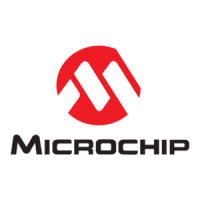DEFINITIONS:
•
ESD: Electrostatic Discharge
• EMI: Electromagnetic Interference
• EFT: Electrical Fast Transients
Simplified Protection Rule Recommendations:
• Protect all signals that come from, or go to external ports using various filters or transient suppressors.
• Protection should also extend to external power input or output sources.
• Unused MCU pins tie to ground through a 1k resistor.
• Do not connect chassis or external port cable shields to logic ground either directly or through a capacitor.
Maintain, whenever possible as much isolation as prudent. Most ESD, EMI, and EFT events originate externally.
As such, the application enclosure and cable shields become a primary conduit to conduct the electrical
disturbance into the heart of the electronic logic which can result in unexpected behavior.
ESD, EMI, and EFT disturbances are transient type events in the 1 ns to 20 ns range as far as peak current or
power.
Notes:
1. There is much more comprehensive information available regarding ESD, EMI, or EFT protection, which
can be found on the Microchip web site, in a document titled: AN2587 - EMI, EMC, EFT, and ESD Circuit
Design Consideration for 32-bit Microcontrollers, or on any of the 32-bit product web pages under the tab
“Documentation” > Application Notes.
2. ESD certification testing covers two basic types of tests: CONTACT DISCHARGE and AIR DISCHARGE.
Contact discharge as the name implies is an electrical discharge directly anywhere on the exposed surface of
the applications enclosure including the screen display, keyboard, push buttons, USB ports, RS232 ports, SD
ports and so on, but never directly to the surface on the PCB. PCB ESD tests only allow for AIR DISCHARGE,
an electrical arc discharges directly above the PCB, usually 1 inch.
Return to Checklist
Unexpected Resets
© 2022 Microchip T
echnology Inc.
and its subsidiaries
Manual
DS70005439B-page 25

